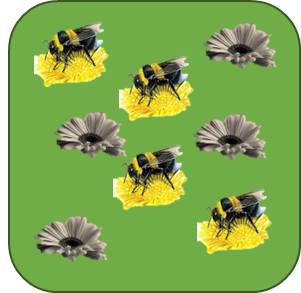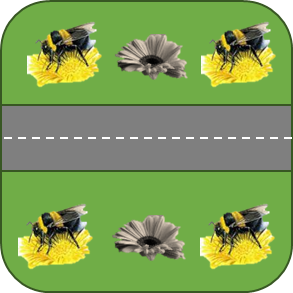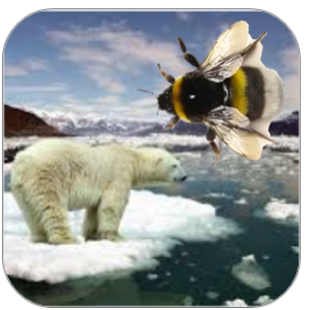Wider threats to bumblebees - click on pictures to find out more
| Habitat Loss | Habitat Fragmentation | Pesticides | Diseases | Climate Change |

|

|

|

|

|
|
Great loss of bumblebee habitat in the last 80years as a result of increasing intensification of land use for agriculture, forestry and development. 98% of flower-rich grassland has been lost in UK since 1940s. Click here to learn more |
Bumblebees will travel long distances to forage, with some species able to travel further than others. Bumblebees require a continuous source of pollen and nectar throughout the length of the colony. If this is not available locally, they have the capacity to travel further to find flowering sources however this has costs in terms of energy expended. For example the duration of a foraging trip for smaller bees e.g. Common carder, Early bumblebee, Shrill carder bee generally take 20mins or less whereas for the larger bees e.g. White-tailed and Buff-tailed bumblebees is over 50mins. Therefore as habitats become more fragmented the species with smaller foraging ranges may be impacted more Click here to learn more |
Studies have revealed that bumblebees exposed to neonicotinoid pesticides visited flowers less and collected less pollen – and that resulted in fewer seeds in the fruit. Two of the world's most widely used insecticides cause significant harm to bumblebee colonies, a new study has found, but a third had no effect. Click here to learn more |
Wild bumblebees are infected with many of the diseases found in honeybees looked after by bee keepers, according to a national survey. Analysis revealed that five common viruses which cause disease in honeybees are circulating in bumblebees. Click here to learn more |
There is some evidence that climate change is impacting on bumblebee populations on a national level. As weather patterns change, there are effects on the insects themselves and on their favoured habitats and forage plants. At present, the potential effects of climate change are much debated, but we may see decreases among some of our more northern and upland species at the same time as gaining others from the south. Indications suggest the Brown-banded Carder Bumblebee (B. humilis), a southern species, is expanding its range north and out competing the Moss Carder Bumblebee (B. muscorum), found in more northern regions in Southern England (Lee et al. 2008) Click here to learn more |
Things you can do to help bumblebees
Plant bumblebee friendly plants and get your garden buzzing all year round. Gardening is a national pastime; an estimated 23 million households (87% of homes) have access to a garden. In total the UK has 15 million gardens and with over 330,000 allotments in the UK, gardeners and allotment holders can make a huge contribution to pollinator conservation.
It is important that bumblebees have access to pollen and nectar from flowering plants throughout the season, including early in the year when queens are establishing nests, through to when nests are growing, when queens are producing new queens and males and right through to when the new queens are hibernating in the late summer and autumn.
No flowers early or late in the year means bees starve so grow plants that flower early and late in the year and get your garden buzzing all year round. Click here to learn more
Many bedding plants produce little or no pollen and nectar, often as a result of selective breeding by horticulturalists for their pleasing appearance. Avoid planting showy double flowers - bumblebees can't feed on them. Plants like pansies and double begonias offer little for bumblebees and other pollinators. Click here to learn more
Keep some ‘weeds’ in the garden – bumblebees love them! Plants like dandelion provide a great long season of food.Click here to learn more
Leave the mower in the shed - longer grass makes great bumblebee habitat. Long grassy areas are of benefit to several species of bumblebee that build their nests in long grass, such as Common carder, Brown-banded carder, Moss carder, Red-shanked carder. Many bumblebees use old mammal nests such as mouse or vole nests so undisturbed areas are really important. If you do find a bumblebee nest, it is best to leave it alone and avoid disturbing it.Click here to learn more
If you have paving or decking or only have a small garden you can plant lots of containers with bumblebee friendly plants. Window boxes with wild flowers offer a great source of nectar and pollen for bumblebees. Even one pot of lavender by your door will really help bumblebees. And if possible avoid paving over large areas – no flowers means no bumblebees. Click here to learn more
It can be quite difficult to encourage bumblebees to nest in a specific place - even specially designed nest boxes have limited success. Simple nests using flower pots which mimic mouse and vole nests can be successful. Click here to learn more
Put away the pesticides - they harm bumblebees and many other beneficial invertebrates. Click here to learn more
